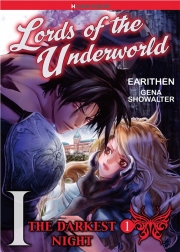Say I Love You Volume 1 by Kanae Hazuki
Say I Love You has a premise that is shared among plenty of shoujo series, as it details an improbable romance between a misfit girl and the most popular boy in school, but it has interesting combination of humor and some grittier than usual plot points, resulting an a series that is more entertaining for being slightly quirky.
Mei Tachibana goes throughout life without having any friends. She doesn’t say much to her classmates, and it is easy to understand why, since she’s been singled out as a target for bullies from an early age. Yamato Kurosawa is extremely handsome, and is one of the most popular boys at school. He’s pleasant, but not very interested in girls who are overly interested in him. Mei captures his attention when one of his friends trips her. Later on, his friend grabs the hem of her skirt and she responds with a silent but deadly roundhouse kick, nailing Kurosawa in the face. Yamato laughs as he’s recovering from the blow and proclaims that Mei is interesting. Yamato asks Mei to be friends and while she doesn’t respond, she calls Yamato later when she is in trouble with no one else to turn to.
Mei decides that even though Yamato is a “nonsensical guy” she’s beginning to trust him a little bit. Her classmates begin to treat her differently when they notice Yamato saying “Hi” to her at school. Gradually they start to get to know each other better, through a series of slight misadventures where Yamato proves himself as steadfast and emotionally intelligent. Mei continues to be feisty and a bit withdrawn, but her lack of caring what other people think comes into play when she defends a girl named Asami after hearing the other girls gossip about her. One of the things I like about this series is that it doesn’t focus only on the slowly developing romance between Mei and Yamato. The first volume shifts over to showing how Asami and Nakanishi get together, with some surprisingly insightful advice from Mei prompting Nakanishi to actually express his feelings.
The art in the first volume is a bit rough. The poses of the characters are stiff, the proportions are sometimes a bit wonky even by manga standards, and the paneling and backgrounds aren’t that interesting or detailed. But I found myself charmed anyway, just because Hazuki draws such cute faces! The art is something I’d expect to improve a bit as the series continued, and I thought that towards the end of the first volume and start of the second it was starting to look a bit smoother.
Say I Love You Volume 2 by Kanae Hazuki
One of the things that makes Say I Love You a little different from many of the other shoujo series that are translated into English, is that it is a bit more forthright when dealing with issues centering around sex. Asami is bullied because she has a well-developed figure. Aiko has a jealous crush on Yamato, and tries to drive off Mei by pointing out that she’s already slept with him. In some shoujo series this revelation would result in Mei and Yamato being kept apart for a couple chapters at least, but Mei asks him if it is true shortly after she finds out. Yamato explains the circumstances behind his encounter with Aiko as something that he regrets, and they are able to move on.
I enjoyed the bit of backstory Hazuki introduces to explain Mei and Yamato’s personalities. He has direct experience with bullying, when one of his friends was harassed so much that he transferred schools. Mei’s withdrawn nature is a bit more understandable when we see her relationship with her overprotective father, who tragically died young.
Mei slowly begins to transform a bit, growing her hair longer and meeting Yamato’s friend Kakeru, who unlike Yamato uses his popularity to sleep around with as many girls as possible. Aiko convinces him to make a pass at Mei, with predictably disastrous results. Mei abruptly leaves the restaurant, leaving food behind and Yamato immediately knows that Kakeru made a pass at her because her habit is to clean her plate every time she eats at a restaurant. Instead of Kakeru immediately becoming a sleazy villain, the next chapter explores more of his world, and the unending and undemanding devotion of his childhood friend Chiharu who actually appreciates him for reasons that go beyond his superficial popularity.
Overall, I really enjoyed the structure of the plot in Say I Love You, since the extended cast seems to be just as interesting as the main couple. With Kimi Ni Todoke wrapping up, I think Say I Love You would appeal to readers wanting something a little bit similar, but different enough to still be interesting. I bought these volumes on my kindle, and I can see myself investing in more e-book versions of this title as it comes out, for sure.

Recent Comments